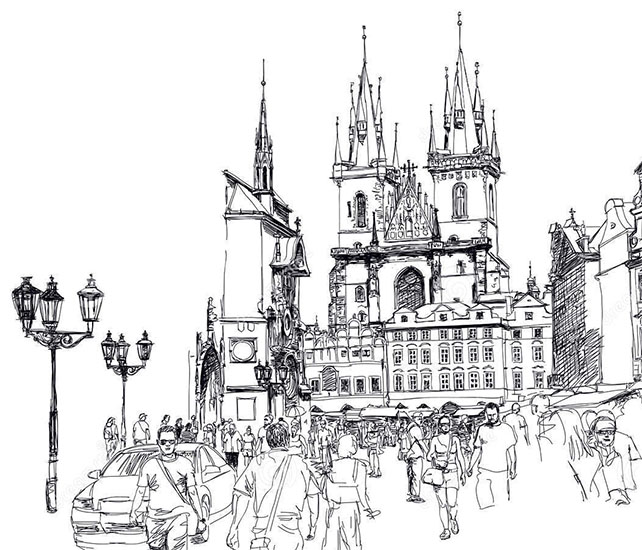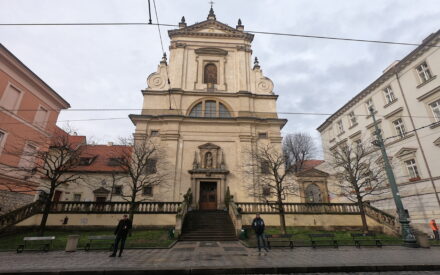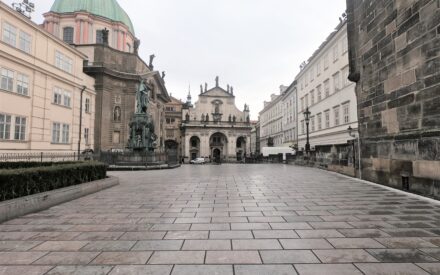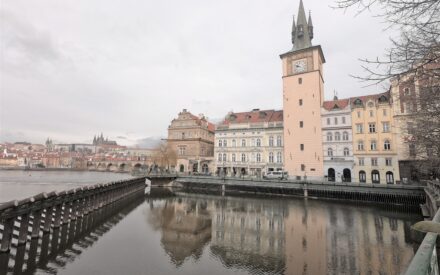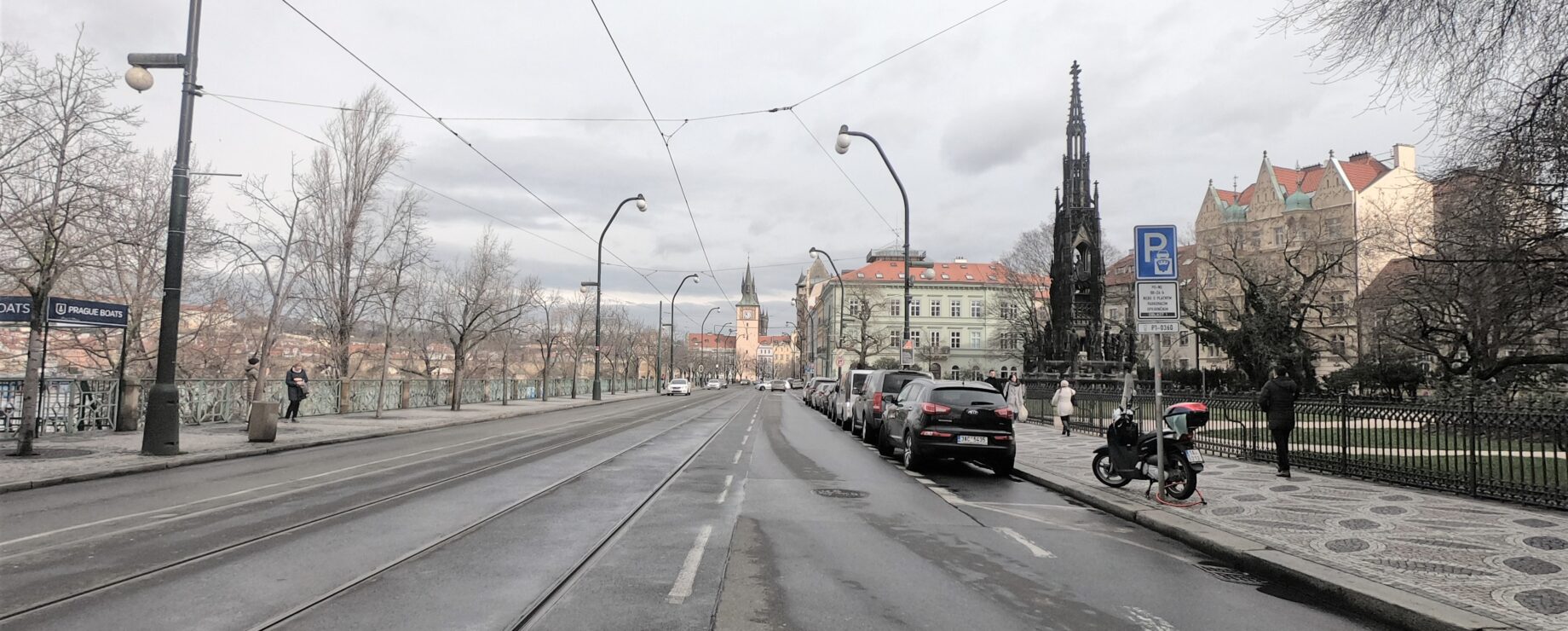
The former Františkovo nábřeží a Monument of the Emperor Franz I. (Krannerova kašna)
(since 1952 Smetanovo nábřeží – Smetana’s Embankment)
Františkovo nábřeží (Emperor Franz‘s Embankment) was built between the years 1841 and 1845 and offers a magnificent view of the city across the Vltava River – first of all it is necessary to mention the bridge of Emperor Franz constructed in 1901 (now called the Bridge of the Legions – Most Legií), the leafy Střelecký ostrov (Schützeninsel or Shooting Island) and the Lesser Town (Malá Strana) situated on the other side of the river with Prague Castle towering above it. When we move off to the right from Národní třída, we will come in a while to a remarkable sculpture with a Neo-Gothic canopy and a riding statue of the above-mentioned emperor.
After the death of the Emperor Franz I the Czech lands decided to honour him with a memorial and chose for this purpose the Emperor Franz’s Embankment (Františkovo nábřeží), which was constructed from 1841 to 1845. The work was carried out by the Czech-German sculptor Josef Max (1804–1855) who completed it in 1850. The monument shows the emperor in his coronation cloak, on his head he is wearing the Czech crown and in his hand he holds a sceptre. Around it are another 25 statues, out of which the lower 16 symbolise the Bohemian regions and the city of Prague, while the upper represent science, art, agriculture, mining, trade and the crafts.
In March 1919 the Czech Interior Ministry decided that all emblems of Habsburg rule must disappear from the public spaces within four weeks (or at least be modified so as to appear unrecognisable, however, this sort of damage to such artistically and highly important works and memorials that were more than 50 years old was pre-empted. That is why it was decided that the emperor’s equestrian statue at least should disappear from the monument, while the remainder would be left as it was. And so that the Czech population would not be offended at the sight of a Habsburg emperor, his statue would at least be covered up until it was completely removed in May 1919. Franz Kafka, in one of his deliberations, plays a fanciful game with his own name, precisely at the instigation of the disappeared emperor from the summit of this sculptural grouping:
Franz Kafka – Tagebücher (s. 856)
„Er war früher Teil einer monumentalen Gruppe. Um irgendeine erhöhte Mitte in durchdachter Anordnung Sinnbilder des Soldatenstandes, der Künste, der Wissenschaft, der Handwerke. Einer von diesen vielen war er. Nun ist die Gruppe längst aufgelöst oder wenigstens er hat sie verlassen und bringt sich allein durchs Leben. Nicht einmal seinen alten Beruf hat er mehr, ja er hat sogar vergessen, was er damals darstellte.“
[He was previously part of a monumental group. Around the elevated, thoughtful centre stood symbolic pictures of military situations, art, science, craft. He was one of the many. Now this group has been long dissolved, or at least he has left it and is living his own life. He no longer has his old job, he has even forgotten what he represented so long ago.]
In 2003 a copy of the statue was made which has since stood in the capital city’s lapidarium, and placed in its original place, so today the monument to Emperor Franz I has its original appearance once again.
This guided walk is a part of the “Democracy on the Brink. Historical lessons from the late 1930s” project supported by the Europe for Citizens programme of the European Union.
Další místa na téma "A literary walk through Kafka’s Prague on the trail of his story Description of a Struggle"
